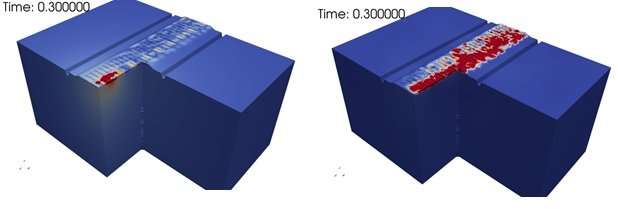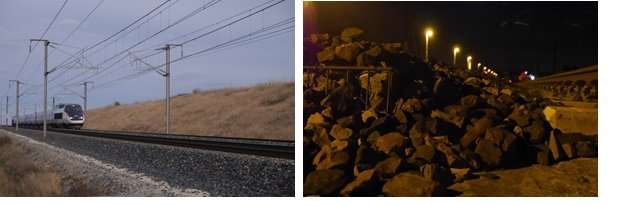Towards better understanding of railway ballast

SNCF engineers have been using mathematical models for many years to simulate the dynamic behavior of railways. These models have not been able to take into account large portions of the track have been extremely limited at modelling ballast, the gravel layer located under railway tracks. This is why SNCF Innovation & Recherche asked for help from specialists in wave propagation for all types of media and at varied scales: CNRS and INSA Strasbourg researchers. Together, they have shown that a large part of the energy introduced by a train passing is trapped by the ballast. Their work, published in the November issue of Computational Mechanics, shows that this trapping phenomenon, which is very dependent on train speed, could cause accelerated ballast degradation in railway tracks.
SNCF engineers currently have two ways that they can take ballast into account to attempt to understand how railway tracks behave as a train passes. One is high-level modelling of interactions between each "grain" and the other is a simpler model where the ballast is represented as a homogeneous and continuous whole. Though taking into account interactions between grains allows demonstration of wear mechanisms locally, it becomes too complex to be applied to the entire track, to the passage of an entire train. By contrast the simple models can be used for large portions of tracks but cannot really tell us what happens in the gravel layer. In addition, measurements on vibrations near the tracks were much lower that what calculations predicted. In this context, the question is how to model an entire train passing, for several meters, or even kilometers, while retaining the specifics of the ballast's mechanical behavior. Something was missing in the modeling to be able to describe the influence of a train passing on the immediate surroundings of the railway.
The researchers have proposed a new mechanism that helps explain why vibrations are lower than predicted as the distance from the track increases. They stopped considering the ballast as a homogeneous medium and started considering it as a heterogeneous medium. This time, the mathematical model and physical measurements agree: they have shown that a large part of the energy introduced by a train passing is trapped in the heterogeneous ballast layer. This trapping phenomenon, very dependent on train speed, could cause degradation in the ballast layer, as the energy provided by the train passing dissipates by the grains rubbing together.
Therefore this work opens paths to a better understanding of the behavior of how railway tracks behave as a train passes. By understanding where in the tracks the ballast traps the most energy, these results particularly open new perspectives on increasing the lifetime of railway tracks and reducing maintenance costs.

More information: Lucio de Abreu Corrêa et al. Randomly-fluctuating heterogeneous continuum model of a ballasted railway track, Computational Mechanics (2017). DOI: 10.1007/s00466-017-1446-8
Provided by CNRS





















